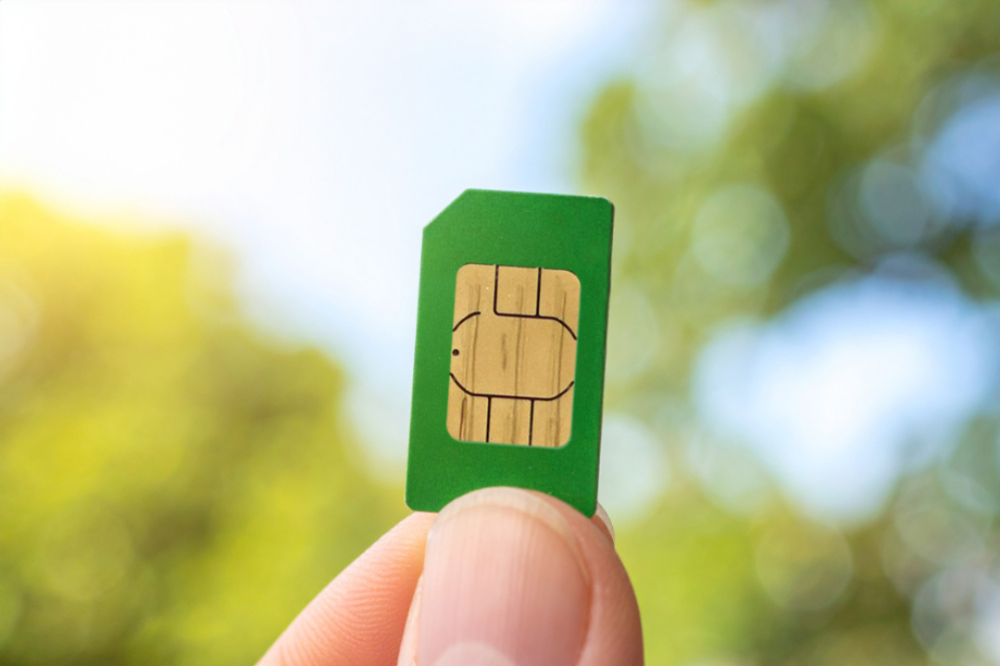
How to Get an eSIM for Japan: A Complete Guide for Travelers
Planning a trip to Japan? Reliable mobile data is your passport to a smooth journey, helping you navigate transit systems, book restaurants, upload photos, and stay in touch with loved ones back home.
And here’s the good news: you don’t need to waste time hunting for free WiFi or queuing at the airport for a pocket WiFi rental; thanks to eSIMs, getting connected in Japan has become incredibly simple.
An eSIM (embedded SIM) lets you access data in Japan without needing a physical SIM card or device, and this comprehensive guide will show you exactly how to get one for Japan.
From checking if your phone is compatible to choosing the best plan and activating your eSIM easily, we’ll walk you through every step. Plus, we’ll share tips to avoid common pitfalls and compare eSIM options with pocket WiFi, so you can decide what’s best for your travel style.
Let’s dive in and connect you—fast, affordable, and stress-free.
How to Get an eSIM for Japan: Step-by-Step Guids

Getting an eSIM for Japan is straightforward, but preparing in advance ensures a smooth experience. Whether traveling for business or leisure, following a few essential steps can help you stay connected without relying on hotel WiFi or physical SIM cards.
The following section outlines how to check device compatibility, evaluate plan options, purchase an eSIM online, and activate it correctly.
Check Your Phone Compatibility
Before purchasing an eSIM plan, confirm that your smartphone supports eSIM functionality and is unlocked for use with other carriers.
Most iPhones from the iPhone XS onward are eSIM-compatible, including models like the iPhone XR, 11, 12, 13, 14, and 15 series. Many newer Android devices also support eSIM, such as Google Pixel 3 and later, Samsung Galaxy S20 series and newer, and recent models from Sony, Oppo, Huawei, Xiaomi, and Motorola.
To check if your device supports eSIM:
- ●On iPhone:
Go to Settings > Cellular > Add Cellular Plan. If you see the option to add a cellular plan, your device is eSIM-capable. - ●On Android:
- Go to Settings > Network and Internet > SIM Manager (or a similar path depending on your model). Look for an option to add an eSIM.
- ●Alternative method:
Dial “ *#06# ” on your smartphone. If an EID (Embedded Identity Document) number appears, your phone is generally eSIM-capable.
Additionally, contact your mobile carrier to confirm your device is unlocked.
Locked phones cannot use an eSIM from an international provider.
Compare and Choose Your Plan
Not all eSIM plans are created equal. When choosing a plan for your trip to Japan, consider several factors:
- ●Daily data limits:
Options typically include 3GB/day, 5GB/day, or unlimited data.
Light users who primarily use maps or messaging may be fine with 3GB per day, while those who plan to stream or upload videos frequently should consider higher limits. - ●Coverage:
- Look for providers offering nationwide LTE or 4G coverage, especially if you plan to visit urban and rural areas.
- ●Duration:
- Select a plan that matches your travel period—a short stay of a few days or a multi-week visit.
- ●Throttling policies:
Understand what happens when you exceed your high-speed data allowance.
Some plans throttle speeds but still allow basic usage for maps or messaging. -
Services like NINJA WiFi offer flexible plans designed for travelers, including high-speed daily allowances suitable for most travel needs.
Buy Your eSIM Online
The most efficient way for Japan to get an eSIM is to purchase it online before departure. Ordering in advance gives you time to receive your QR code and set up your phone, reducing the need for in-country troubleshooting.
Trusted providers like NINJA WiFi allow you to buy a plan through their website in just a few minutes. Once payment is completed, you’ll typically receive a confirmation email and a QR code for activation.
Install and Activate the eSIM
After purchasing your eSIM plan, follow these general steps to complete installation:
- 1.Receive your QR code via email after your purchase.
- 2.Open your phone’s settings and select the option to add a new cellular plan.
- 3.Scan the QR code using your phone’s camera.
- 4.Follow the on-screen setup instructions, which may include naming your new plan and selecting it as your default for mobile data.
- 5.Activate the eSIM once you arrive in Japan or as instructed by the provider.
Most providers also include a user manual or support guide for setup.
With proper preparation, your phone should be ready to connect as soon as you land—no SIM card swaps or rental counters required.
Where to Get an eSIM in Japan (Even After You Arrive)

While purchasing an eSIM before your trip is ideal, getting one after arriving in Japan is possible.
Whether you forgot to arrange connectivity in advance or simply prefer to finalize your plans on the ground, you don’t need to rely on expensive roaming; several providers offer convenient online purchase and activation options that work just as well post-arrival.
Below, we’ll explore how to secure an eSIM after landing and how it compares to alternatives like pocket WiFi and physical SIM cards.
Online Purchase Options After Arrival
Travelers who arrive in Japan without mobile data can still obtain an eSIM plan quickly and easily. Indeed, NINJA WiFi allows you to purchase a plan online even after entering the country. After selecting a plan and completing your payment, activation instructions are sent directly to your email, typically within minutes.
Note that you’ll need an internet connection to complete the activation process. Most international airports in Japan offer free WiFi, which can be used to access your email and download the required materials.
Hotel WiFi is another reliable option if you prefer to wait until after check-in to activate your eSIM.
With NINJA WiFi, online ordering is available 24/7, making it a practical solution for travelers arriving late at night or outside business hours.
eSIM vs. Pocket WiFi Pickup Options
For travelers comparing eSIMs with other connectivity options, pocket WiFi and prepaid SIM cards remain viable alternatives, particularly for group travel or more extended stays.
Many providers offer pocket WiFi rentals with pickup counters in airports such as Narita, Haneda, Kansai, and city locations. These services often feature multilingual signage and fast, in-person handover.
One advantage of pocket WiFi is sharing one device among multiple users. Plus, providers like NINJA WiFi offer flexible pickup and return options, which are especially helpful for longer trips across various regions.
For example, travelers can collect a device in Osaka and return it to Nagoya or even Okinawa without revisiting the original pickup location.
While pocket WiFi is ideal for those who prefer a physical device or are traveling with family or colleagues, eSIMs provide a more streamlined, personal solution. There is no need to carry extra equipment, charge an external device, or manage returns.
Travelers who want complete control over their mobile connectivity—on a single device—will appreciate the independence and simplicity of an eSIM.
How to Choose the Right eSIM Plan for Japan

To make the best choice among the variety of plans available, travelers should carefully consider their usage habits, travel itinerary, and budget.
The right plan can make a significant difference in convenience and cost, especially for more extended stays or those relying heavily on mobile data abroad.
Consider Your Data Needs
Start by estimating your expected daily data usage. Light users—primarily using their phones for navigation, messaging, and occasional web browsing—can typically get by with 1GB of daily data.
However, travelers who plan to upload videos, make frequent video calls, or stream content will benefit from higher-capacity or unlimited data plans.
Social media apps like Instagram or TikTok, streaming YouTube videos, or attending online meetings through platforms like Zoom can quickly consume large amounts of data.
Choosing a plan that offers 5GB per day or an unlimited option ensures stress-free usage without the constant need to monitor consumption.
Coverage and Speed
Japan’s mobile infrastructure is highly developed, but not all providers offer the same level of coverage or performance. When selecting an eSIM plan, prioritize those that operate on major domestic networks (such as NTT Docomo, SoftBank, and KDDI) with broad coverage across urban centers, smaller towns, and rural sightseeing spots.
Even if a plan includes a daily high-speed data cap, it often allows internet access at reduced speeds after reaching that limit. The throttled speed still supports essential functions like using Google Maps, sending messages, and checking emails, making it a practical safeguard against total disconnection.
Reliable providers clearly disclose their speed policies and partner networks, so be sure to review this information when comparing plans.
Budget and Travel Duration
Align your eSIM plan with the length of your trip. Most providers offer a range of options, such as weekly, 10-day, or monthly packages, allowing you to avoid overpaying for unused days or data.
For example, a 10-day plan can be ideal for most short-term vacations, while a monthly plan offers better value for extended stays.
By carefully evaluating your usage patterns and trip length, you can select a plan that balances performance, coverage, and affordability, ensuring reliable access to maps, translation apps, and real-time communication throughout your journey.
Conclusion
Getting an eSIM for Japan is an innovative and easy way to stay connected throughout your trip, whether navigating a metropolitan train system or coordinating plans in the countryside.
With just a few steps—checking your device, comparing plans, and completing a simple online purchase—you can enjoy stable internet access from the moment you land.
For travelers who value flexibility, instant activation, and reliable data coverage, services like NINJA WiFi offer user-friendly solutions tailored to international visitors. Choose the right eSIM plan to stay connected and make the most of your time in Japan.









